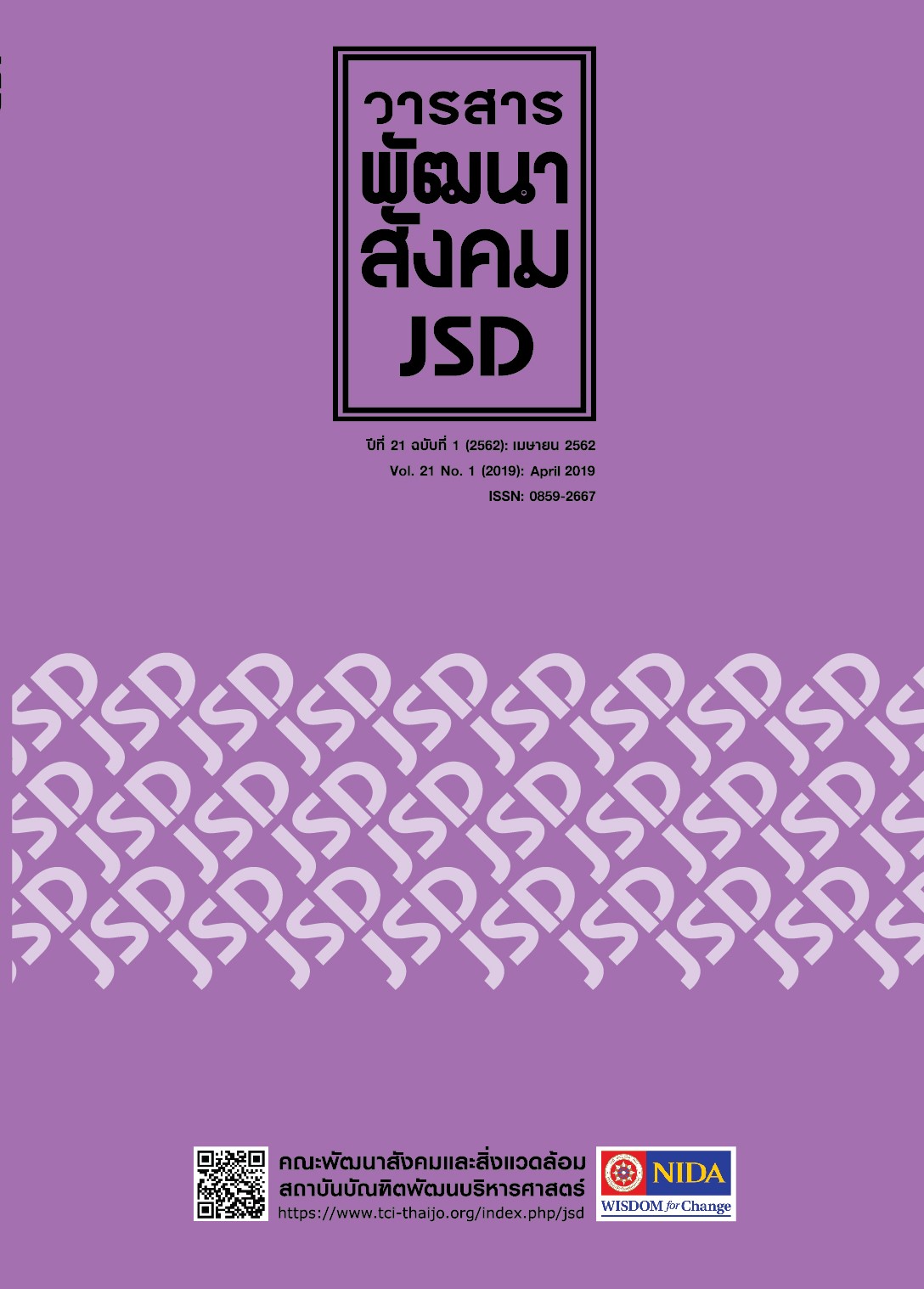Highland Agrarian Transition Amidst the Invasion of Commercial Plants: A Study of Tomato Planting in Ban Na Fon and Ban Mae Tom Bon, Chiang Mai Province
Main Article Content
Abstract
This article aims to examine highland agrarian transition in Chiang Mai province after tomato growing areas have been extended since the late 1970s. The researcher selected two highland villages, Ban Na Fon and Ban Mae Tom Bon, as study villages. The in-depth interviews with 20 villagers (village leaders and tomato growers) and the survey with 142 household samples (Ban Na Fon 81 households, Ban Mae Tom Bon 61 households) have been applied to understand the village history, tomato producing and trading. The result indicated that the expansion of tomato cultivating areas in the study areas have caused the changes of production structure and labor management. Upland and irrigated rice growing were extremely degraded. Rich farmers and land lords have preferred to employ labors for irrigated rice growing, meanwhile they have grown tomato in highland around villages.
Article Details
References
Baulaung Municipal District. (2017). Building and Land Tax Payment in 2017 [In Thai]. Baulaung Municipal District.
Chiang Mai Provincial Agricultural Extension Office. (2017). Agricultural Basic Information [In Thai]. Retrieved October 10, 2017, from Chiang Mai Provincial Agricultural Extension Office website: http://www.chiangmai.doae.go.th.
Choochat, C. (2002). Travelling (Pack-ox) Merchants: The Beginning of Village Trading in Northern Thailand (1855 – 1960) [In Thai]. Chiang Mai: Sansilp.
Das, R. (2001). Class, Capitalism and Agrarian Transition: A Critical Review of Some Recent Arguments. The Journal of Peasant Studies, 29(1), 155 – 174.
Drahmoune, F. (2013). Agrarian Transition, Rural Resistance and Peasant Politics in Southeast Asia. Journal of Current Southeast Asia Affairs, 32(1), 111 – 139.
Ganjanapan, A. (1989). Conflicts over the Development and Control of Labor in a Northern Thai Village. In Hart, G., Turton, A., & White, B., Agrarian Transformations: Local Processes and the State in Southeast Asia (pp. 98 – 122). Berkeley, Los Angeles, London: University of California Press.
Katephrom, S. (1998). Lua do upland rice framing, Tai do paddy farming [In Thai]. Chiang Mai: Ming Muang Printing.
Koninck, R.D. (2004). The Challenges of the Agrarian Transition in Southeast Asia. LABOUR, Capital and Society, 37, 285 – 288.
Kunstadter, P. (1978). Subsistence Agricultural Economics of Lua and Karen Hill Farmers, Mae Sariang District Northwestern Thailand. In Kunstadter, P., Chapman, E.C., & Sabhasri, S., Farmer in the Forest: Economic Development and Marginal Agriculture in Northern Thailand (pp. 74 – 133). Honolulu: University Press of Hawaii.
Kunstadter, P., Chapman, E.C., & Sabhasri, S. (1978). Farmer in the Forest: Economic Development and Marginal Agriculture in Northern Thailand. Honolulu: University Press of Hawaii.
Manivong, V. (2014). Agrarian Transition in Lowland Southern Laos: Implications for Rural Livelihoods. A thesis submitted for the degree of Doctor of Philosophy, School of Agriculture and Food Sciences, University of Queensland.
Omkoi Tambon Administrative Organization. (2016). General Information [In Thai]. Retrieved November 15, 2016, from Omkoi Tambon Administrative Organization website: http://www.Omkoi.go.th.
Rigg, J. (2001). More than the Soil: Rural Change in Southeast Asia. Harlow: Prentice Hall.
Stoler, A.L. (1989). Rice Harvesting in Kali Loro: A Study of Class and Labor Relations in Rural Java. In Taylor, J., & Turton, A., Sociology of Developing Societies: Southeast Asia (pp. 111 – 122). London: Macmillan.
Yamabhai, J. (2013). One Ethnic Group, Two Locales, and Three Presences: Lifeworld of Lawa in Chiang Mai Province [In Thai]. Journal of Language and Culture, 32(1), 31 – 46.
Zhan, Q.F. (2012). The Political Economy of Contract Farming in China’s Agrarian Transition. Journal of Agrarian Change, 12(4), 460 – 483.
ผู้ให้สัมภาษณ์
1) นายหนู (นามสมมุติ), อายุ 88 ปี, ผู้เฒ่าชาวกะเหรี่ยงบ้านแม่ต๋อมบน, 10 มกราคม 2559
2) นายมา (นามสมมุติ), อายุ 88 ปี, ผู้เฒ่าชาวลัวะบ้านนาฟ่อนและอดีตกำนันตำบลบ่อหลวง, 12 เมษายน 2559
3) นายชา (นามสมมุติ), อายุ 43 ปี, ชาวกะเหรี่ยงบ้านแม่ต๋อมบน, 17 กันยายน 2559
4) นางสา (นามสมมุติ), อายุ 60 ปี, เกษตรกรบ้านนาฟ่อน, 11 กุมภาพันธ์ 25601)
5) นายปา (นามสมมุติ), อายุ 56 ปี, เกษตรกรชาวลัวะบ้านนาฟ่อน, 15 กันยายน 2559
6) นางดี (นามสมมุติ), อายุ 67 ปี, เกษตรกรบ้านนาฟ่อน, 26 มกราคม 2560
7) นายป้อ (นามสมมุติ), อายุ 80 ปี, ผู้เฒ่าชาวลัวะบ้านนาฟ่อน, 27 มกราคม 2560


